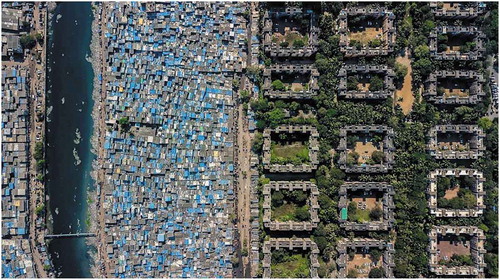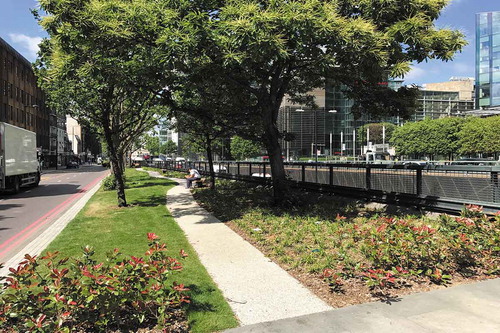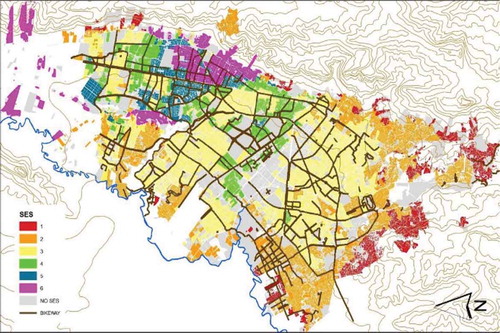CITY KNOW-HOW
Human health and planetary health are both influenced by city lifestyles, city leadership, and city development. For both, worrying trends are leading to increasing concern. It is imperative that both become core foci in urban policy. Changing the trajectory will require concerted action. The journal Cities & Health journal is dedicated to supporting the flow of knowledge, in all directions to help make this happen. We want to support communication between researchers, practitioners, policy-makers, communities and decision-makers in cities. This is the purpose of this City Know-how section of the journal. ‘Research for city practice’ disseminates lessons from research, explaining the key messages for city leaders, communities and the professions involved in city policy and practice. ‘City shorts’ provide glimpses of what is being attempted or achieved. ’Case studies’ are where you will find evaluations of interventions and ‘Commentary and debate’ helps extend the conversations we are having and develop much needed new thinking. Join in these conversations. In service to strengthening the community of interest, we would like to include many and varied voices, including those from younger practitioners and researchers, connected with supporting health and health equity in everyday urban lives.
Marcus GrantFootnote
Editor-in-Chief, Cities & Health
Caroline Brown
Commissioning Editor, Cities & Health
The evidence base linking city spatial planning and governance to health and health equity outcomes grows stronger all the time. 2018 has also seen global actors, including the World Health Organisation, the United Nations Human Settlement Programme and international city networks, discussing such links with reference to the United Nation’s Sustainable Development Goal’s framework. However, in many places city development occurs without reference to this evidence, without consideration of health outcomes in statutory decision-making processes or reference to the Sustainable Development Goals. In other places – often rapidly urbanizing low- and middle-income countries – statutory territorial planning processes are weak or barely applied, and health has no place in decisions about city development.
This issue of Cities & Health contains five empirical research papers and three stimulating and contrasting commentary pieces. The subject matter of the empirical papers spans several continents and addresses seemingly unrelated issues. However, each paper in its own way sheds light on how important a better understating of health and health equity is for built environment decision-makers, and the communities they serve.
Many engaged scholars are reaching out and working with communities and policy makers towards healthier place-making. Cities & Health is proud to play a role in supporting these connections. Trevor Hancock’s third and final commentary on equity, sustainability and governance as 21st century challenges, pays tribute to the role of engaged local communities and the essential part that ‘the local’ must play in global change.
Ageing populations are a global concern. In terms of spatial planning, much can be gleaned from Stessa Chao’s new book ‘Planning for Greying Cities’. This edited volume, reviewed by Geoff Green, looks at age-friendly planning in design research and in practice, with a special focus on East Asia.
Many of us welcome discovering missing pieces from the history and theory of healthy places. Hugh Barton’s article ‘Shafts of light from the past’, takes his cue from Roderick Lawrence and co-authors’ paper examining lessons from Hippocrates published in issue 1. Here, Barton looks at town planning wisdom, now forgotten. In particular, he explores some of the theories and practices of healthy town planning in ancient Greece and Rome. There are topical lessons for location, street pattern, access to facilities and all importantly – mechanisms of change.
By contrast, recent events provide the setting for the work of Jo Hunter-Adams and team in Cape Town, South Africa, bringing us back to the present day with a timely report from South Africa’s listeria outbreak between January 2017 and March 2018. With almost 1000 confirmed cases and 183 deaths, the authors use this event to interrogate the power of the state and private sector in shaping the food system, and to reevaluate food traceability and broader governance. They encourage us to reconsider the determinants of diet and consequent health outcomes of the poor. They offer suggestions for the development of policy and programmatic inventions better attuned to the lives of the poor and the creation of health. Talking of the commercial determinants of health, as they discuss the cycle of low wages and low food prices supporting unhealthy foods. Referring to earlier work, where the World Health Organisation found weak multi-sectoral coordination as a significant challenge to addressing non-communicable diseases, they advocate for better allocation of resources at sub-national level to help address structural issues.
Here at Cities & Health, we acknowledge the pressing need for city leaders and practitioners to better understand their role in delivering health outcomes through urban environment policies and programmes. The paper by Helen Pineo and her team of researchers addresses this. The paper titled ‘Promoting a healthy cities agenda through indicators: development of a global urban environment and health index’ has already proved very popular, with over 900 views since being published online. It presents the development of the Building Research Establishment’s ‘Healthy Cities Index’ to support better decision-making. This global index contains 10 environment categories and 58 indicators, supported by a causal pathways framework. The paper describes this being achieved through an iterative process of engaging stakeholders, evaluating evidence, selecting indicators and identifying data sources.
We all now know that urban planning policy has the potential to improve population health outcomes and reduce health inequities within cities. But in Australia, as in most places, the pathways for implementing policy approaches are unclear, responsibilities are contested and dispersed across sectors, portfolios and levels of government; so say Maureen Murphy and her co-authors. They use local food environments to examine decision-maker perspectives on urban planning and governance. This study contributes to an understanding of the actions required to deliver healthy and equitable outcomes. It also tackles the thorny question of how to act in situations where two of the potentially most powerful levers, regulation and finance, are weak.
Many cities are building, extending or improving cycleways to support health. But how many have asked how this relates to health equity? Diana Parra and a team of researchers asked this question about Bogota. Using spatial analysis, they looked at the access to a strategic cycle network, the Ciclorutas, in relation to the socio-economic status of neighbourhoods. Are we surprised by the results? The median distance to the cycleway network was1062 m for the most disadvantaged and only 315 m for the wealthiest neighbourhoods, showing a clear difference in the spatial distribution. Their work concludes with recommendations on where to start for cities who may be considering supporting health through improving such active travel infrastructure.
The research paper ‘The effects of the water crisis on population dynamics in the City of Flint, Michigan’ marks a different kind of paper for the journal. Rather than tackling the health impact of poor water quality directly, Victoria Morckel and Greg Rybarczyk tell the story of a wider impact of years of under investment in water infrastructure. Their story is supported by a survey of over 400 Flint residents and an analysis of spatial data. The authors tested a hypothesis about the water crisis facing Flint and its population dynamics. They find that although population loss has not yet accelerated, nearly half the residents are considering leaving. Importantly, perceptions of drinking water safety and its potential health effects, more than actual water quality, predicted whether residents considered leaving. What is happening in Flint has implications for other cities, with a potential for questions about social and environmental justice.
In many countries a tension exists between built environment ‘professionals’ way of doing things, and the vernacular of local approaches. There are many examples of placemaking that ignores local culture and hasn’t benefited from local knowledge. It sometimes needs a more polarized condition, a more extreme situation, to help us wake up to what we are missing. Bruno Marques, Jacqueline McIntosh and William Hatton present us with such a lesson. Their paper ‘Haumanu ipukarea, ki uta ki tai: re-connecting to landscape and reviving the sense of belonging from New Zealand’ presents us with landscapes that were personified by the Indigenous Māori; a situation where relationship with the land forms the basis of a cultural existence. Their article explores the potential for reinstating the ideologies associated with traditional indigenous knowledge and the intricacies of interconnectedness between environments and people, for improved health and wellbeing. Although situated in a very specific and, for many, atypical context, there is a general lesson for us all about our (re)connection with place; and a practical case study for those working with communities that still feel such a connection.
2018 has seen a number of major conferences broadcasting the message of urban health as recurring theme within the United Nation’s Sustainable Development Goals. There are many relevant targets for health and wellbeing and sustainable urbanization in SDG3 (Good health and well being) and SDG11 (Sustainable cities and communities) plus several other important references scattered among the other 15 goals. As editors, we are beginning to sense that a framework such as the Sustainable Development Goals, if applied in the right way, might contain the systemic approach to health at both planet and people level, that we have all been craving. If there are any conclusions to be drawn from this third issue of Cities & Health, with its eclectic collection of papers; we can take to heart a basic lesson. There is learning for us all within each and every place-specific study.
Promoting a health cities agenda through indicators: development of a global urban and health index
RESEARCH FOR CITY PRACTICE
Take note: Practitioners in urban planning, regeneration, housing, transport, environmental health and public health. professionals and elected city officials.
Take note: Academics in planning, public health and public policy.
Understanding how urban environments affect health is the first step in making a healthy city.
Many city departments have the potential to affect health, although this is not often their primary function. Housing, regeneration and planning departments, for example, make decisions and policies which impact a wide range of health-related issues such as air quality, indoor thermal comfort and access to local services. The BRE* Healthy Cities Index and BRE* Causal Pathways Framework help cities understand how the local environment impacts health.
The BRE Healthy Cities Index and associated BRE Causal Pathways Framework have multiple benefits. They help local professionals become aware of the links between the environment and health – highlighting overlapping responsibilities and the need for collaboration across departments. These tools can also be of value through exposing the conflicting priorities faced by some city departments (and private sector stakeholders).
We already know: The World Health Organization’s Healthy Cities movement has long used urban health indicators to understand local environmental exposures. These are not published and compared internationally. Many city indices have been published that compare quality of life, sustainability and liveability at an international level. These indices have been used to raise awareness, shape debate and foster a healthy competition to improve cities globally. However, there have been relatively few studies which investigate how these indices support local practitioners.Footnote
What this study adds: The BRE Healthy Cities Index focuses on urban environment exposures that can be influenced by built environment policy and decision-makers. We piloted the Index and the associated BRE Causal Pathways Framework in London and Dubai to understand how these tools can benefit city government. We describe the methods used to develop these tools, including the difficult compromises when selecting appropriate data and indicators, and the challenge of aggregating and presenting these metrics. We also report feedback from an expert workshop.
Implications for city policy and practice: The BRE Healthy Cities Index and Causal Pathways Framework can be used in cities to support cross-departmental efforts to integrate health into environmental policies and decisions. When piloting in Dubai, stakeholders said that its greatest contribution is to: engage city leaders, promote innovation, raise awareness, inform priorities or strategies, and demonstrate the multiple departments and organisations which are required to act. In London stakeholders found the approach provided a simple overview of complex urban health issues to kick-start discussions about policy and monitoring.
Full article: Promoting a healthy cities agenda through indicators: development of a global urban environment and health index
*Note: The BRE is the Building Research Establishment, a multi-disciplinary building science centre which seeks to improve the built environment through research and knowledge generation.
Authors: Helen Pineo (@helenpineo), Nici Zimmermann (@NiciZim), Ellie Cosgrave (@elliecosgrave), Rob Aldridge (@rob_aldridge), Michele Acuto (@Pacioz), Harry Rutter (@harryrutter)
Edited by: Marcus Grant
Food access in cities; making it healthy and equitable through better urban planning and governance
RESEARCH FOR CITY PRACTICE
Take note: Planning Institute of Australia, Heart Foundation of Australia, Prevention Health Victoria. Public health and planning professions worldwide.
Urban planners, economists, health and community policymakers share insights in a new study on creating healthy food environments using urban planning and policy governance levers.
Urban planning policy has the potential to benefit food access through improving access to healthy food outlets and limiting access to unhealthy outlets; however,
pathways for implementing these policy approaches are unclear, and
responsibilities are contested and dispersed across portfolios, sectors and levels of government.
What we did and why: This study aimed to understand stakeholder perspectives on urban planning policies and other factors that influence food access through the development of local food environments, and to identify governance opportunities to advance healthy equitable local food access and food environments.Footnote
What this study adds: Regulation, urban planning policy, finance, coordination and partnerships are key governance actions and processes for the creation of healthy food environments; with political leadership as a driver for action and distributed leadership as essential for implementation.
Regulation, urban planning policy, finance, coordination and partnerships are key governance actions and processes for the creation of healthy food environments; with political leadership as a driver for action and distributed leadership as essential for implementation.
Concerted action across multiple governance processes is required.
Land use, housing density, urban design and transport policies were used in tandem by local government to support the development of healthy equitable local food environments.
Implications for city policy and practice: Local fine-grained data of food outlet access and associations with health outcomes is an important driver of political leadership at the local level, engages civil society as advocates for change and identifies geographic areas of inequity.
A multi-pronged approach to partnerships is essential, harnessing opportunities to bring healthy food access to both time-limited and ongoing coordinating platforms, as a standalone priority or as part of a broader focus on healthy built environments or liveable communities.
Full article: Local food environments: stakeholder perspectives on urban planning and governance to advance health and equity within cities
Useful links: Healthy Active by Design (www.healthyactivebydesign.com.au)
Authors: Maureen Murphy (@maureenfmurphy1), Helen Jordan, Hannah Badland and Billie Giles-Corti (@billiegc)
Edited by: Marcus Grant
Bicycling infrastructure in Bogota: do we all have the same access?
RESEARCH FOR CITY PRACTICE
Take note: The mayor of Bogota and the Instituto de Desarrollo Urbano de Bogotá. City transport, cycling and public health interests in all cities.
Lack of ‘Ciclorutas’ (bicycle lanes) in Bogota’s neighbourhoods of low socio economic status shows inequality in the access to active transportation options, potentially increasing health disparities
The public network of bicycle lanes (‘Cicloruta’) in Bogota, is the largest in Latin America. It has 344 km distributed throughout the city. However, concerns exist about unequal distribution of the routes with reference to communities in areas of lower socio economic status. One potential effect of this unequal access to bicycle road infrastructure is an exacerbation in health disparities in the population of Bogota.
We have a problem: Active transportation such as cycling for commuting purposes can be an ideal mode of access in terms of implications for human health and the environment. Not everyone can have the same level of access; but who does and who doesn’t?Footnote
What this study adds: We found an unequal distribution of ‘Ciclorutas’ by neighbourhood location and socioeconomic status, with significantly reduced access to cycle lanes in lover socioeconomic status areas.
We found that the average distance from the centre of a block to a ‘Cicloruta’ was 444 m.
However the distance to a cycle lane in the most disadvantaged blocks was 1,062 m compared to 315 m for the wealthiest blocks.
Implications for city policy and practice: What is needed now:
If the goal is to address the needs of those most dependent on cycling, such as populations living in the most disadvantaged areas, then other cities would benefit from using an analytic approach such as that used in this paper to assess access to cycleways in terms of equity.
Improving city-wide health and health equity outcomes through cycling may involve expanding the network of bicycle lanes and cycle lane access for populations living in less advantaged areas.
Associated links and information:
Bici en Bogota https://www.civico.com/bogota/bici
Mi Ruta Facil https://mirutafacil.com/ciclorutas/
Cicloruta Bogota http://www.bogota.gov.co/tag/cicloruta
Ciclorutas Instituto de Desarrollo Urbano https://www.idu.gov.co/page/cicloruta
Authors: Diana C. Parra (@HokeoDiana), Luis F. Gomez (@LuisFernandoGm6), Jose D. Pinzon, Ross C. Brownson and Christopher Millett
Edited by: Marcus Grant
Water infrastructure failures have impacts beyond human health
RESEARCH FOR CITY PRACTICE
Take note: American Planning Association, Eastern Great Lakes Chapter of the Association of American Geographers, Association of American Geographers, Michigan Association of Planning, Crim Fitness Foundation, Genesee County Land Bank, The City of Flint Planning Department.
Study shows the Flint, Michigan water crisis may spur additional population losses for the city.
Our study shows the potential for a negative cyclic relationship between failures in infrastructure provision and population loss. While population losses have not yet accelerated, we found that many residents of Flint, Michigan are considering leaving the city because of a water crisis. If a large proportion of residents leave, the quality of the city’s infrastructure will further erode as the tax base continues to decline. We found that perceptions of the water’s safety and its long-term health effects – rather than sociodemographic variables or actual water lead levels – predict whether a resident considers leaving. Further, resident responses did not vary by demographics or home location – meaning that policy makers cannot target retention initiatives to one group or section of the city.
What is already known: The literature on migration in developing nations indicates that poor quality infrastructure is a ‘push’ factor because people leave places that cannot provide water or other basic services. It is conceivable that the same phenomenon could occur in the U.S. as infrastructure deteriorates. This issue has not yet received a lot of attention in the academic literature or mainstream media; however water systems in the U.S. are now just reaching the point where they are old and failing.Footnote
What our study adds: The study adds to the paucity of work on the relationships between water infrastructure and population dynamics. Although it uses empirical analyses and a case study approach focused on the Flint, Michigan water crisis, the findings have wider implications.
Implications for policy and practice: Flint may be one of the first cities in the U.S. to experience a man-made, catastrophic water infrastructure failure on a large scale. It is conceivable that other legacy/shrinking cities could face similar challenges as their infrastructure ages and is not maintained due to financial constraints stemming from deindustrialization. This study emphasizes how disinvestment in water infrastructure has implications for community development, cities’ long-term financial health, and ultimately their sustainability. We argue that it is important for planners and policy makers to be aware of the public’s perception of infrastructure quality.
Full article: The Effects of the Water Crisis on Population Dynamics in the City of Flint, Michigan
Authors: Victoria Morckel and Greg Rybarczyk (@GregRybarczyk)
Edited by: Marcus Grant
Re-connecting to landscape and reviving the sense of belonging
RESEARCH FOR CITY PRACTICE
Take note: City officers, policy makers, landscape architects. Indigenous communities and people working with indigenous communities worldwide.
New ways of integrating indigenous knowledge in landscape architecture design
In the current context, in New Zealand, traditional, cultural and ancestral landscapes have been desecrated by growing demands from colonization, capitalism, urbanization and globalization.
What we did and why: We explored the potential for reinstating the ideologies associated with traditional indigenous knowledge and, in particular, the intricacies of interconnectedness between environments and people. We examined new ways of integrating Māori knowledge in landscape architecture and landscape design to renew and expand the concepts of belonging, identity, quality of life and place.Footnote
What this study adds: This study adds to the understanding of where identity and wellbeing fit when we design for architecture or landscape architecture. It also adds to our; acknowledgment of the role of nature, and the ability to design in a way that addresses the natural ecosystems and celebrates the environment around us.
The study shows the importance of the consideration of traditional indigenous knowledge as a catalyst for truly understanding site context and design outcome
Implications for city policy and practice: Based on this study we suggest: Involving the wider community in the process of designing and building can both enrich a design and benefit the community members. Ensuring an holistic understand of site and landscape through an indigenous lens can assist in designing better places for people.
Full article: Haumanu ipukarea, ki uta ki tai: re-connecting to landscape and reviving the sense of belonging
Authors: Bruno Marques (@BrunoAGMarques), Jacqueline McIntosh and William Hatton
Edited by: Marcus Grant
Research for City Practice Notes on Contributors
Michele Acuto is Professor of Diplomacy & Urban Theory, and Director of the UCL City Leadership Lab, in the Department of Science, Technology and Engineering (STEaPP) at UCL, where he also serves as co-chair of UCL’s Grand Challenge of Sustainable Cities. Michele is also a Senior Fellow of the Chicago Council on Global Affairs, advises WHO on city diplomacy, and is currently co-chairing the UCL-Nature Sustainability Expert Panel on the role of science in the future of cities.
Robert W. Aldridge is an NIHR Academic Clinical Lecturer at the Institute of Health Informatics at UCL. He qualified in medicine from UCL in 2007, gained an MSc in Epidemiology at The London School of Hygiene and Tropical Medicine in 2010 and completed his PhD at UCL in 2015. Prior to studying medicine, he studied Mechanical Engineering at The University of Nottingham.
Hannah Badland, Ph.D., is a principal research fellow, Healthy Liveable Cities Group, Centre for Urban Research, RMIT University, Melbourne, Australia.
Ross C. Brownson is the Bernard Becker Professor of Public Health at Washington University in St. Louis. He is interested in evaluating the impacts of environmental and policy interventions on health behaviors and he conducts research on dissemination of evidence-based interventions in public health and policy settings.
Ellie Cosgrave is Lecturer in Urban Innovation and Policy and Deputy Director of the City Leadership Lab in the Department of Science, Technology Engineering (STEaPP) at UCL. Her work explores the ways in which engineering and technology can better contribute to wellbeing in cities.
Billie Giles-Corti is the director of the Healthy Liveable Cities Group, Centre for Urban Research, RMIT University, Melbourne, Australia.
Luis F. Gomez is professor of the School of Medicine of the Pontificia Universidad Javeriana at Bogotá, Colombia. His experience as a researcher and scholar has focused on the following topics: urban environments and health, surveillance of risk factors of non-communicable diseases, social determinants of the processes of nutrition transition in Latin America and processes of political advocacy in the area of public health.
William Hatton Māori iwi/tribe affiliation: Ngāti Kahungunu ki Wairarapa, Rangitāne and Muaupoko. Postgraduate student and research assistant in Landscape Architecture, Victoria University of Wellington, School of Architecture. His research skills and expertise are related to the culture, landscape architecture, and Kaupapa Māori’s subjects.
Helen Jordan, PhD, is a senior lecturer, Centre for Health Policy, The University of Melbourne.
Bruno Marques is Director of Postgraduate Programs and Lecturer in Landscape Architecture, Victoria University of Wellington, School of Architecture. His main research interests relate to the integration of Indigenous methods in participatory design in landscape rehabilitation and ecosystem services.
Jacqueline McIntosh is a Senior Lecturer, Victoria University of Wellington, School of Architecture. Her main research interests are design-led culturally appropriate participatory design for improved health and well-being.
Christopher Millett is Professor of Public Health at Imperial College London. He is Visiting Professor at the Public Health Foundation of India and the University of Sao Paulo, Brazil. Christopher moved to the UK from Australia in 1994, working in several research and NHS public health roles before undertaking formal public health training in London. He completed his PhD at Imperial College in 2008 and was awarded a 5 year NIHR Research Professorship in 2014.
Victoria Morckel holds a PhD in City and Regional Planning from The Ohio State University. She is a member of the American Institute of Certified Planners (AICP) and is currently an Associate Professor of Urban Planning in the Department of Geography, Planning, and Environment at the University of Michigan’s Flint campus. Dr. Morckel’s research considers ways to improve quality of life for people living in shrinking, deindustrialized cities in the Midwestern United States. She is especially interested in the causes and consequences of population loss, including issues of vacancy, blight and neighbourhood change. Dr. Morckel has two other articles on the Flint water crisis: ‘Why the Flint, Michigan, USA water crisis is an urban planning failure’ which appeared in Cities in 2017, and ‘Legacy city residents’ lack of trust in the governments: An examination of Flint, Michigan residents’ trust at the height of the water crisis’ forthcoming in Journal of Urban Affairs.
Maureen Murphy is a PhD candidate, Centre for Health Equity, The University of Melbourne.
Diana C. Parra is an assistant professor at the Program in Physical Therapy from Washington University in St. Louis, and Scholar at the Institute in Public Health. Dr. Parra has over 10 years of experience in chronic disease prevention at the national and international level, specifically in the area of physical activity, nutrition, and obesity. Her background includes non-traditional methodologies to assess physical activity, such as social network analysis, concept mapping, and systematic observation; and research into healthy diets using the NOVA classification.
Helen Pineo is Associate Director – Cities at BRE and a chartered urban planner with experience in policy development and urban design for health and sustainability objectives. She is a part-time PhD researcher at University College London (UCL) investigating the use of urban health indicator tools by urban planning policy and decision-makers. Helen is an editorial advisor for the Cities & Health journal.
Jose D. Pinzon qualified as an architect from Universidad de los Andes 1999, an Urban Design Specialist from Universidad Jorge Tadeo Lozano, and has a master’s degree in Geography from Universidad de los Andes. Former Associate Professor of Universidad Jorge Tadeo Lozano in the Specialization in Urban Design. Researcher with the University Corporation of the Center of Bogotá. Extensive experience in consultancies in urban issues and researcher in the lines of urban processes and urban environments and public health in conjunction with other entities.
Harry Rutter is senior clinical research fellow at the London School of Hygiene and Tropical Medicine, senior strategic adviser to Public Health England, and an adjunct professor of public health at University College Cork and the Western Norway University of Applied Sciences. He has a particular interest in complex adaptive systems approaches to public health evidence and policy, with a particular focus on obesity; evaluation of public health interventions; and the relations between transport, sustainability, built environment and health.
Greg Rybarczyk received his M.S. and Ph.D. from the University of Wisconsin-Milwaukee with a focus on Transportation Geography and Geographic Information Systems (GIS). He is currently an Associate Professor at the University of Michigan-Flint, Department of Geography, Planning, and Environment, where he has been helping lead campus-wide GIS efforts since 2010. Dr. Rybarczyk has over a decade of experience utilizing GIS to analyze transportation, urban, and environmental systems within government, non-profit, private and academic sectors. His current research spans topics within the fields of GIS, transportation and urban health; where he relies on GIS, spatial statistics and inferential methodologies. His most recent research foci includes: travel-demand modelling, human mobilities, Big Data, public health, food systems, and urban planning.
Nici Zimmermann is a Lecturer in System Dynamics at the Institute for Environmental Design and Engineering at UCL. Seeking counterintuitive and innovative solutions for important problems, she researches topics related to the built environment, interdisciplinarity, system dynamics modelling, processes of change and decision-making.
Notes
“Unequal scenes”
People living in cramped riverside slums side-by-side
with affluent and spacious block development
in the Bandra Kurla suburbs, Mumbai.
Photo: Green infrastructure alongside Euston Road in London could help to absorb noise and air pollution. Photo credit: Helen Pineo.
Photo: Inner urban local food environment in Melbourne, Australia: proximal access to supermarkets and well-serviced by public transport, although not conducive to cycling. Photo credit: Lillian Murphy.
Image: Map of Bogota distribution of bicycle lanes by SES. The SES categories range from: 1 = most disadvantaged, 2 = disadvantaged, 3 = middle, 4 = middle-high, 5 = high, 6 = wealthiest.
Photo: City of Flint, Michigan main water plant and tower. Photo credit: Greg Rybarczyk.
Photo: The Kaiwharawhara stream: mined, culverted, tunnelled, littered, neglected, weed-infested, and now undergoing ecological restoration. Photo credit: Gerry Keating.






